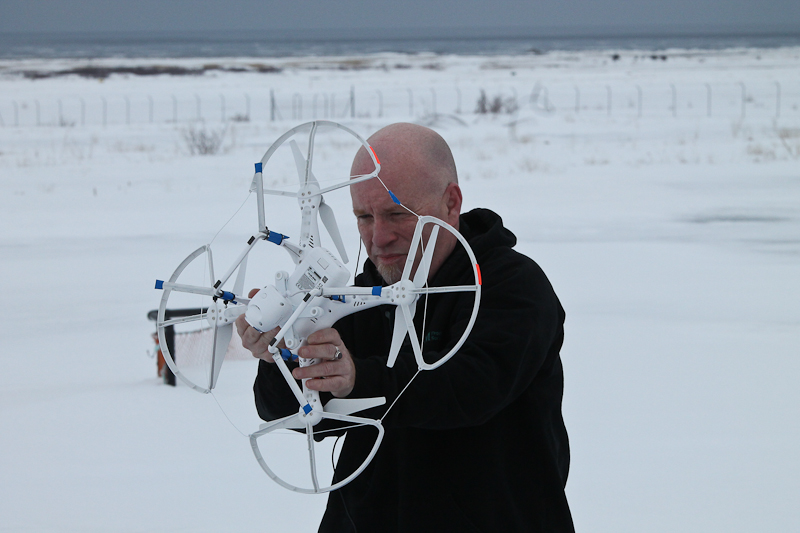Canadian journalism schools now have their first ever drone journalism code of conduct, courtesy of a Newfoundland journalism instructor.
College of the North Atlantic (CNA) instructor Jeff Ducharme recently created a Drone Journalism Code for photojournalism students at the college’s Bay St. George, N.L., campus.
While Ducharme said he wrote the code primarily for his students, he hopes it helps spur a discussion on the larger ethical issues surrounding unmanned air vehicles in journalism.
“I think whether people adopt pieces of the code and then write their own rules or whether they adopt the whole thing, you need a jumping off point, you need something to start the dialogue,” he said.
Ducharme said drone journalism has recently been a contentious public issue, with privacy concerns surfacing as drone use by media organizations becomes more commonplace.
“I think people have fears about the technology, and it’s not for us to say that those fears aren’t legitimate, but I think what we have to do is show them that we understand their fears and their concerns,” he said.
“We have to prove to the public that we can operate these [drones] responsibly.”
Drone journalism has taken off in the past several years, although Canadian journalism schools have been slow to embrace the new technology.
Currently, Vancouver’s Langara College and CNA are the only post-secondary institutions in Canada that offer drone journalism instruction.
But Ducharme said despite the small number of schools teaching drone journalism, he thought it was “something really worth investigating.”
“I just started realizing that this has huge potential. The more I saw information the more I saw [drone journalism] as something we should consider,” he said.
Ducharme began teaching drone journalism last year as part of CNA’s photojournalism program. Students get the chance to operate two different drones: the smartphone controlled Parrot AR.Drone 2.0 Quadricopter and the DJI Phantom 2 Vision, which can reach a horizontal speed of 54 kilometres an hour.
However, Ducharme said despite CNA’s high-tech drones, flight time is at a premium at the college.
“The most amount of time is spent on the ethics, regulations and operating these craft responsibly,” he said. “The actual flight time is the least of it.”
Currently, Transport Canada requires a Special Flight Operation Certificate be issued for every unmanned air vehicle flight, which Ducharme said usually takes around 20 days to process, effectively eliminating the potential for drone use in spot news.
Many news organizations, like the St. John’s Telegram are nevertheless taking advantage of the new technology, albeit while jumping over the regulatory hurdles.
According to the Telegram’s managing editor Steve Bartlett, standards like those suggested by Ducharme are a good idea, although he cautioned against a blanket code.
“Standards and practices are definitely needed. We don’t want one person’s drone use affecting the reputation of anyone else’s,” he said.
Bartlett said his newspaper purchased a drone in January and has so far filmed a panorama of the Lower Battery in St. John’s and a bird’s eye view of an iceberg in Torbay.
He said being able to connect with stories as a bystander—or “flystander”—through drones is an idea with lots of potential.
“My thing—and I always like this about journalism—is that we have the opportunity to take people places where they’ve never been or to take them to see things they’ve never seen, even if that’s from a different angle. The drone definitely allows you to tell stories differently,” Bartlett said.
“Its exciting. I mean, the sky’s the limit.”






